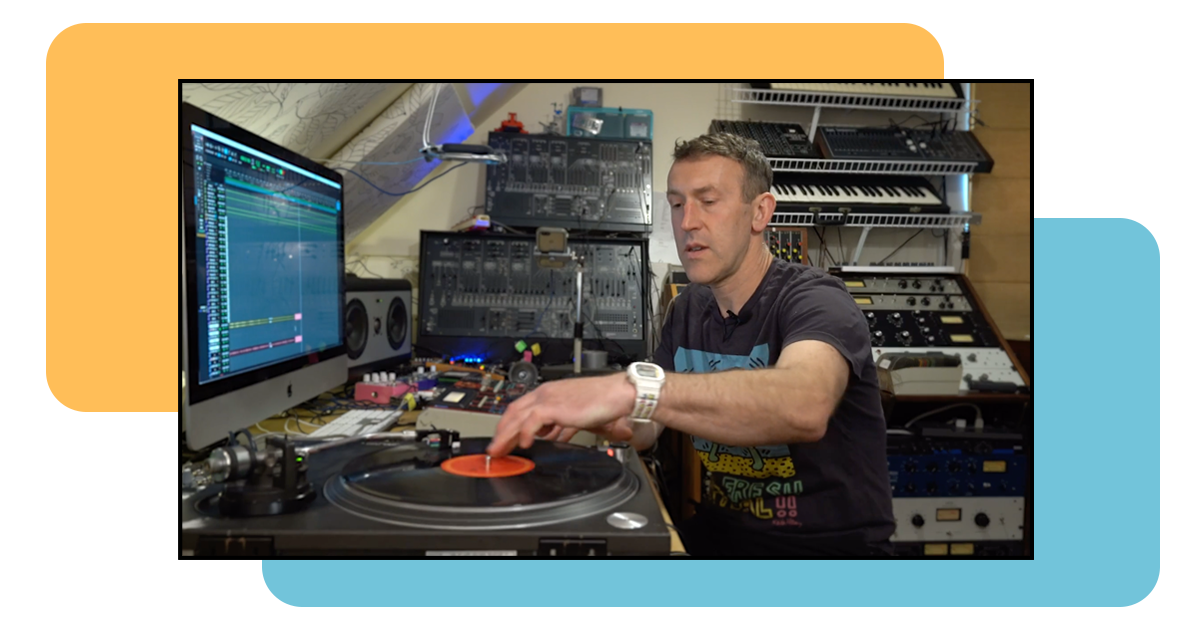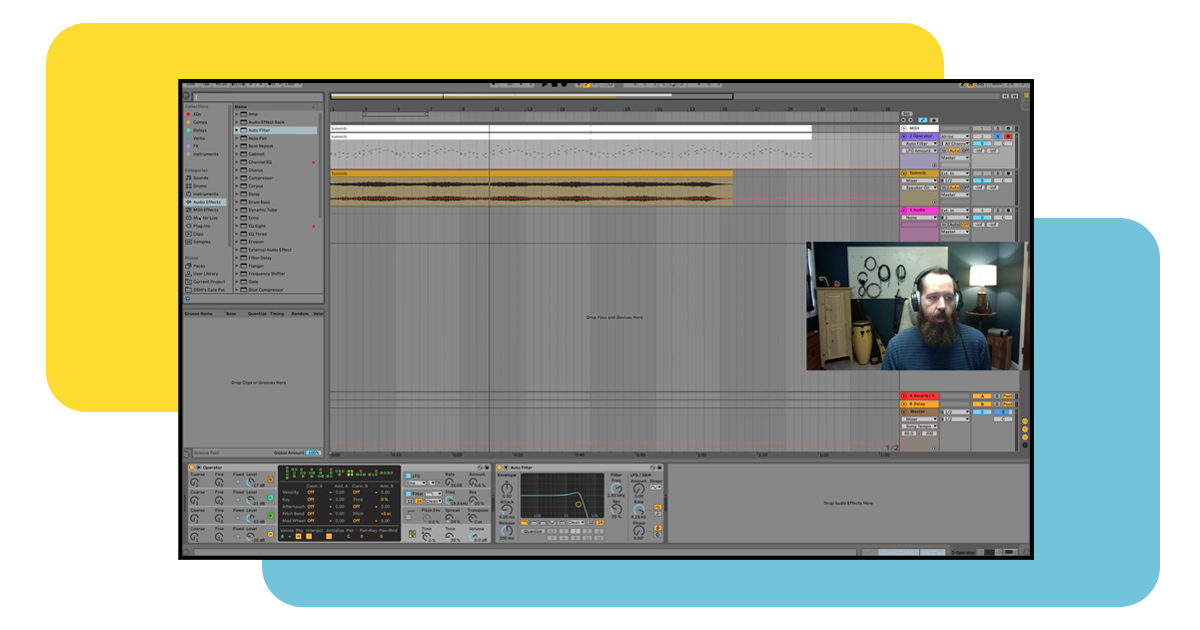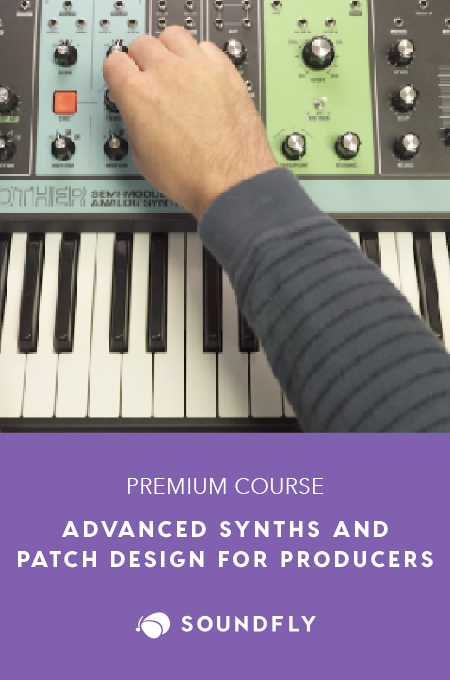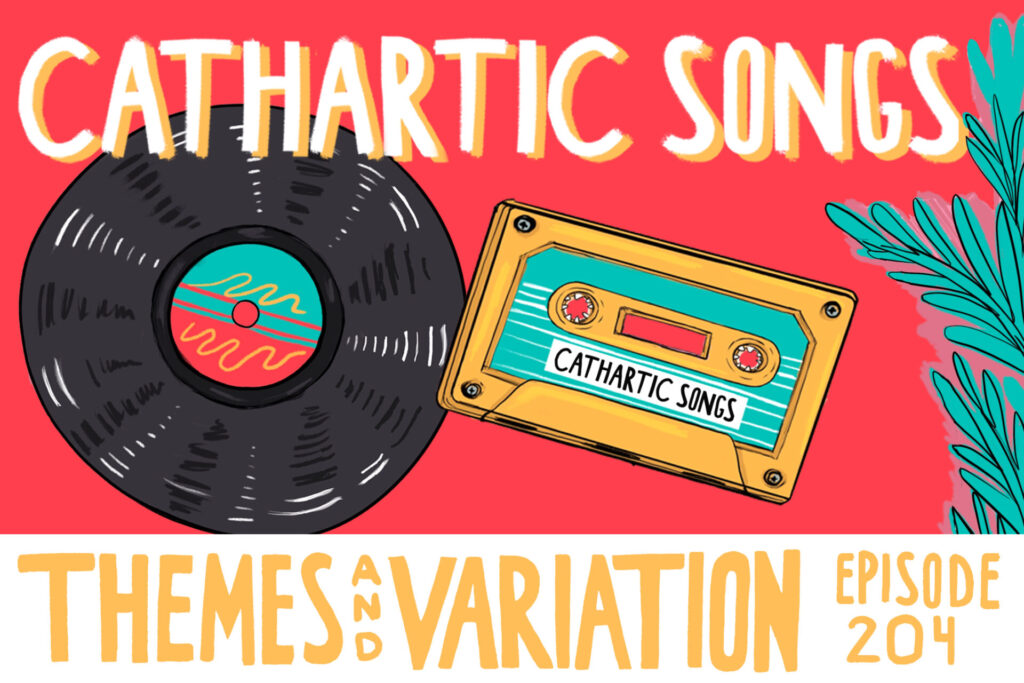
Repetition
Soundfly’s new, themed monthly newsletter entitled “5 Lessons On…” is now on Flypaper.
Each month, we gather a digest of five Soundfly course lessons that respond to a shared theme and approach that area of discussion from different, unique angles. We hope that these lessons help anchor your music learning for the week, inspire you to explore new directions, or simply provide some entertaining content to enjoy over the weekend!
Since we just launched our newest course, Jlin: Rhythm, Variation, & Vulnerability — which touches on composing and producing electronic dance music, and the emotional struggles of that format — let’s take the conversation one step further to explore this month’s topic: Repetition.
For every producer, songwriter, and composer out there, repetition is both a blessing and a curse. To some degree, we’re always either relying on it or fighting against it; what tools exist to help work this stuff out? Let’s find out.
Here are our favorite 5 Lessons On… Repetition. Enjoy! *Note: You’ll need to be a Soundfly subscriber to access the lessons.
JLIN: RHYTHM, VARIATION, & VULNERABILITY
Pattern Repetition and Variation
Pioneering producer and composer Jlin is always rebelling against the endless predictability of repetition in her genre of electronic dance music. How can you have a driving, danceable beat and enough timbral, rhythmic, or tempo changes to keep it interesting at the same time?
She says: “repetition can do two things for me: either we’re going to build to something and go somewhere, or we’re going to take off and crash.” That pretty much sums it up — you can’t have repetition without variation.
The function of variation, thus, is to work in tandem with repetition to surprise your audience, and open a new door that nobody knew was even there. Jlin’s best advice: surprise yourself first, do the unexpected, and you’ll be rewarded.
Check Out This Full Lesson on Soundfly
RJD2: FROM SAMPLES TO SONGS
Finding and Capturing a Great Loop
What makes a perfect sample loop?
This is one question that a producer like RJD2 has pondered so much over the years, that it’s become almost second nature for him to be able to identify which loops may or may not work in a beat, when he’s listening to records.
According to RJ, when sourcing and capturing loop samples, it’s gravely important to not “exhaust your listener” — you want to find something intriguing but not “busy,” or overly saturated harmonically (or rhythmically). Because after 16 bars of a repeating loop, your ears can get pretty tired.
In this way, some things you can do to adjust the loop’s intensity and flow are to edit the attack spot, alter the sample length, swap the up and down beats, and find segments that can be used to build different variations later on. Try it!
Check Out This Full Lesson on Soundfly
FADERS UP: MODERN MIX TECHNIQUES
How Delay Works
Delay is pretty much what its name implies — a “delayed” or repeated version of an audio signal. In this helpful, foundational lesson, Fader Up course series instructor Nyle Emerson explains the basics of how delay works in your mix application.
Parameters such as Feedback and Time / Note will adjust how long your wet signal repeats and the time or note length in between when the original and delay signals start again. Modern DAWs simulate how an analog tape machine runs audio signal across various playheads distanced apart from each other.
Using delay is a great way to get more mileage out of a sound, since you’re expanding the space and time that sound occupies in your mix. Just beware of oversaturation and the dreaded endless feedback loop!
Check Out This Full Lesson on Soundfly
THE MUSIC OF BOY BANDS
Reduce, Reuse, Recycle: The Three R’s of Pop Harmony
In the culture of Boy Band music, you might think it all sounds the same. Every song is a repetition of the same topics, the same melodies, and the same hooks. And you might even be right! But songwriter and educator Mahea Lee argues in her course, that, well, that’s why this music is so fun to study!
How do Pop songs at the tippy top of the charts function so well harmonically? A lot of it has to do with those three R’s we all know from Earth Day…
- “Reducing” means simplifying the melodies and chord voicings so that there’s no ambiguity about what you’re trying to say.
- “Reusing” means that, as songwriters you can lean into the familiarity of well-worn chord progressions — in fact there’s value in it!
- And “Recycling” means repeating your best ideas throughout your song, to hammer home the story you’re trying to tell; melodically and lyrically.
Check Out This Full Lesson on Soundfly
ADVANCED SYNTHS & PATCH DESIGN FOR PRODUCERS
Squarepusher’s Ambient, Airy Loops in “Tommib”
Electronic music just doesn’t get any prettier or more minimal than one of Squarepusher’s classic early tracks, “Tommib.” Despite being known for glitchy, upbeat dance music, this song is built from just two looping synth voices.
One benefit of repetition here, according to synthesist and producer John Hull, is that “limiting the number of elements present at any given moment draws the listener’s ear to every detail.”
And while the simplicity of Squarepusher’s composition totally masks the complexity of this song’s FM synthesis patches — designed to sound both like a church organ as well as ethereal like an angel whirling around up in the sky — it’s true that we’re able to focus in on each tiny ripple and shimmer.
Learn to rebuild this patch and make use its emotive benefits, and watch how it was made in the first place.
Check Out This Full Lesson on Soundfly
Improve all aspects of your music with Soundfly.
Continue learning with hundreds of lessons on songwriting, composing, home recording, electronic production, beat making, and much more. Explore Soundfly’s full array of exciting online music courses here.










